 August 2012 Tank of the Month
August 2012 Tank of the Month
August 2012 Tank of the Month
Written by Carlinhos Moreno
Carlinhos Moreno's 980L (252 US-gallon) Reef Aquarium
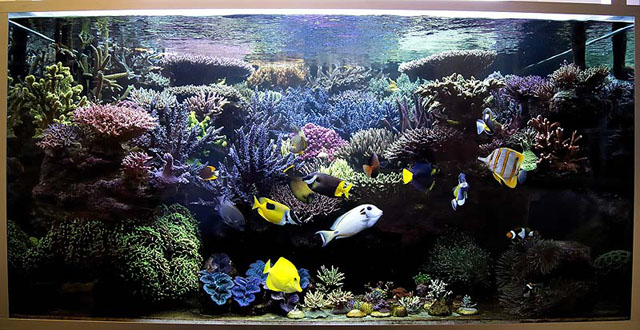 |
Introduction
Hi! I am Carlos Moreno, 59 years-old, and an aquarist since I was a kid. Back then I kept guppies and other common fresh water fishes at home. Twenty-seven years ago I started my first marine aquarium, a 300-liter, fish-only tank. After that first aquarium I started a larger one that measured 2.2 meters long (7.2 ft). At that time I kept mainly butterflyfishes. Decoration at that time was composed of only skeletons from Brazilian fire corals, a very common species from our Northeastern coast. In total, I had about 4 fish-only tanks before I moved on to corals.
Background
Fifteen years ago I planned my first LPS tank. It was a 600-liter (159 US-gallons) display with just a few SPS. I used a calcium reactor from Dupla, a German company. That equipment was a complete unknown in our market, so I had to figure it out by myself how to setup and use it. That first attempt at corals lasted 4 years. I used an aragonite sand bed, and due to the use of the calcium reactor, it solidified after 3 to 4 years, so I had to disassemble the tank.
My second tank, it's featured on page 345 of Julian Sprung's 3rd book, had a 1,000 liter capacity (264 US gallons) and was focused on stony corals. Again, after 3 years, the Halimeda sand bed crashed, which took me to my third coral tank. Again about 1,000 liters for the display (+1,500 liter on circulation tanks). This time I used 12 to 15 cm of Samoa pink sand bed, which crashed again after 3.5 years. February 2007 I assembled my first bare-bottom system, so I could keep it for longer time. It had 600 liter capacity, installed on the same stand of the third tank. By the way, the stand is the same I use today. For biological filtration and denitrification I used 4 plastic containers installed as a remote deep sandbed on two larger containers connected to my sump.
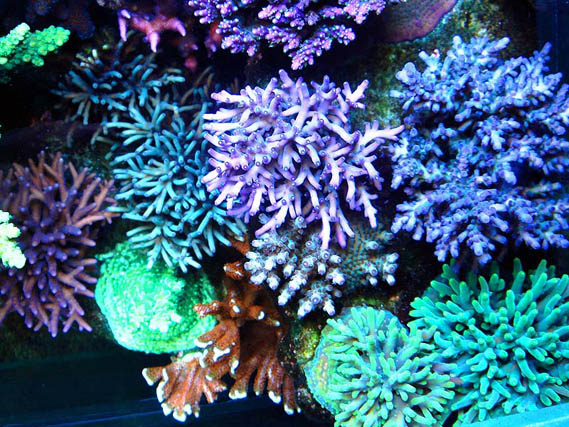 |
Current Tank
As the corals grew larger, I decided to switch to a larger glass aquarium, which is my current tank. It measures 140cm x 100cm x 70cm (W x D x H). This is about 55" width, 40" depth and 27 1/2 " height. Display gross capacity is close to 1,000 liter again, and I have another 1,000 liter of water circulating through the complete filtration system.
A word on the RDSB (remote deep sand bed): December 2011 I got rid of the Samoa pink boxes and now I got about 140 liter of Siporax Pond in 4 perforated boxes (see pictures). My original plan was to remove the Samoa pink boxes, each at a time, and rinse them periodically. After a while doing that I was surprised to see how much organic matter accumulated in the sand, and decided for a simpler setup for cleaning purposes (see below).
I made all the rock work myself, a modular system that allows me to remove parts of it for coral trimming and other maintenance tasks. There's an elevated platform where I keep those corals that need more light, while LPS and anemones occupy the lower section. The bottom of the display consists of a 1cm layer of a mix of Samoa Pink sand with polyester resin, just for esthetic reasons.
I assembled my coral collection along the years. Most of them dating back from my first coral tank. The big hammer coral is 10 years old; a Duncanopsammia was brought by Julian Sprung when he came to Brazil back in 1999, and I managed to get a frag from that colony. That frag grew to the large colony that can be seen in the pictures. On each new build I trimmed the colonies down, but basically they are all coming from tank to tank without any major losses. I don't feed my corals anything; all their needs are supplied indirectly through feeding the fishes (and photosynthesis, of course). Check Checkers Specials and Dischem Specials.
System Profile
• Display tank: 980L (252 US-gallon) glass aquarium (140cm x 100cm x 70cm)
• Sump: 18 chambered sediment container, 2x Siporax containers
• Circulation: 2x 3-way closed loop of 6x 1262 Eheim pumps, 1x 1262 Eheim pump return
• Lighting: 16x 54W T5s; 6x white (Narva), 2x Pink (Giesemann), 8x blue (Narva)
• Heating: 3x 300W heaters located in sump
• Cooling: 3x fans blowing across sump
• Skimmer: Deltec AP702 Skimmer
• Kalk Reactor: 15 liters per day via LiterMeter III dosing pump
• Calcium Reactor: Knopp Calcium Reactor
• Other: Water changes every month of 15% (hW Calcium Marin Plus and Tropic Marin)
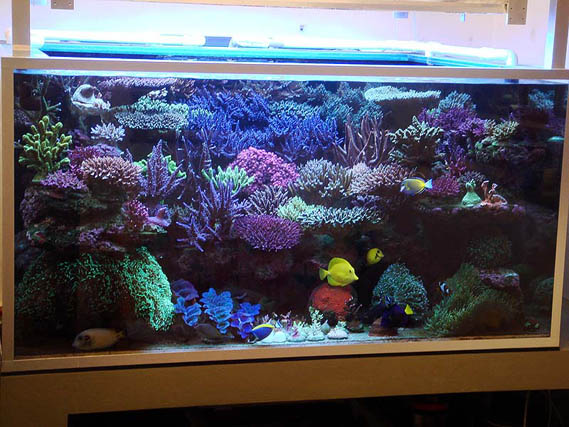 |
Circulation
For circulation I use a 2x3-way closed loop consisting of six 1262 Eheim pumps: water is collected through holes on the back wall and through an overflow to a box behind the tank, where the six pumps return most of it through outlets on the front (2), the back (2) and the bottom (2) of the tank. Part of the water falls into another box from where it reaches the sump underneath the display. The circulation between display and the sump system is provided by another 1262 Eheim pump that sits in the sump. I have tried other setups for circulation, including Vortech pumps, but I achieved the best results with the current setup. I use an Ocean Motion wave maker to control the circulation pumps in the closed-loop and make sure the bottom is washed periodically so that no sediment is allowed to settle for long on the bare bottom.
The water path through the filtration system is as follows: all the flow goes through a recirculation skimmer from Deltec, model AP702, which I have been using for 6 years in my aquariums; from there, it passes through a kind of labyrinth consisting of 18 chambers where any solid particles that made it through the skimmer can sediment to the bottom; next in line are two boxes with two Siporax containers each, which I prepared myself from smaller plastic boxes. I punched many holes in it in order to allow a gentle water flow through the Siporax elements. The Siporax containers are elevated through small spacers. Prior to making the water changes, I shake the boxes to release all the sediment from the Siporax rings and allow it to settle down. I then siphon the sediment out as part of my water change. The final step in my filtration system is the Knopp calcium reactor. A single 1262 Eheim pump then returns the water to the display. This pump operates on a no-break system to keep the circulation going on in case of power outages.
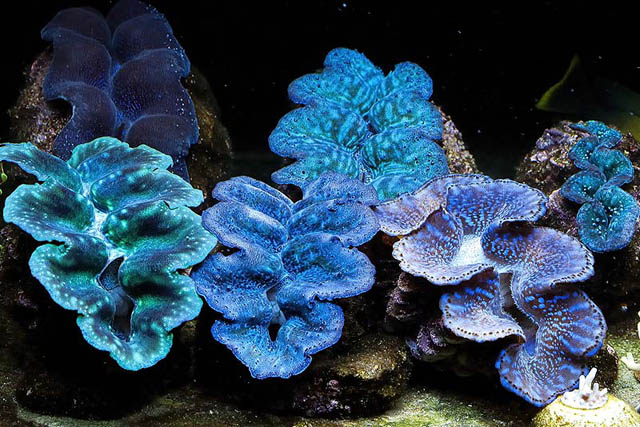 |
|
Water Parameters:
|
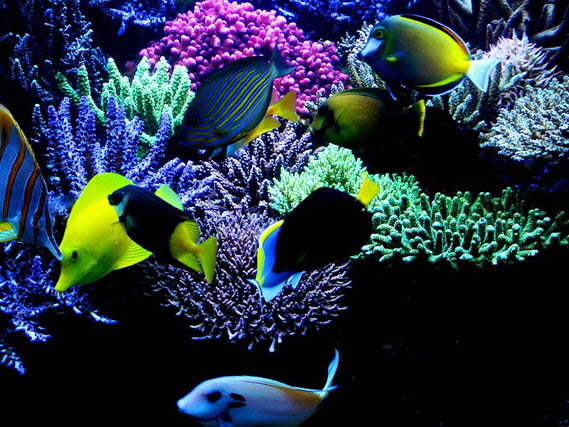 |
Livestock
|
Fish:
|
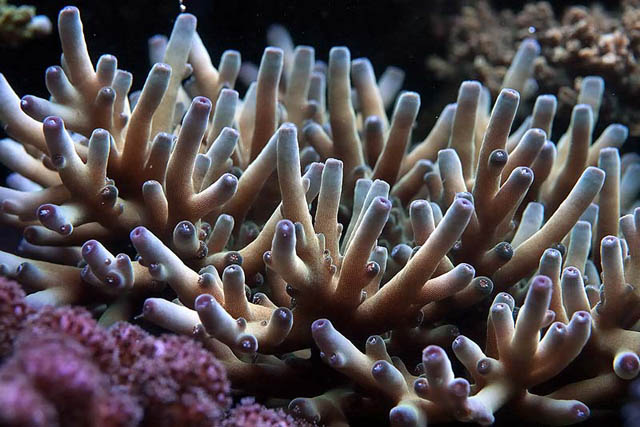 |
Feel free to comment or ask questions about my tank in the Tank of the Month thread on Reef Central.



